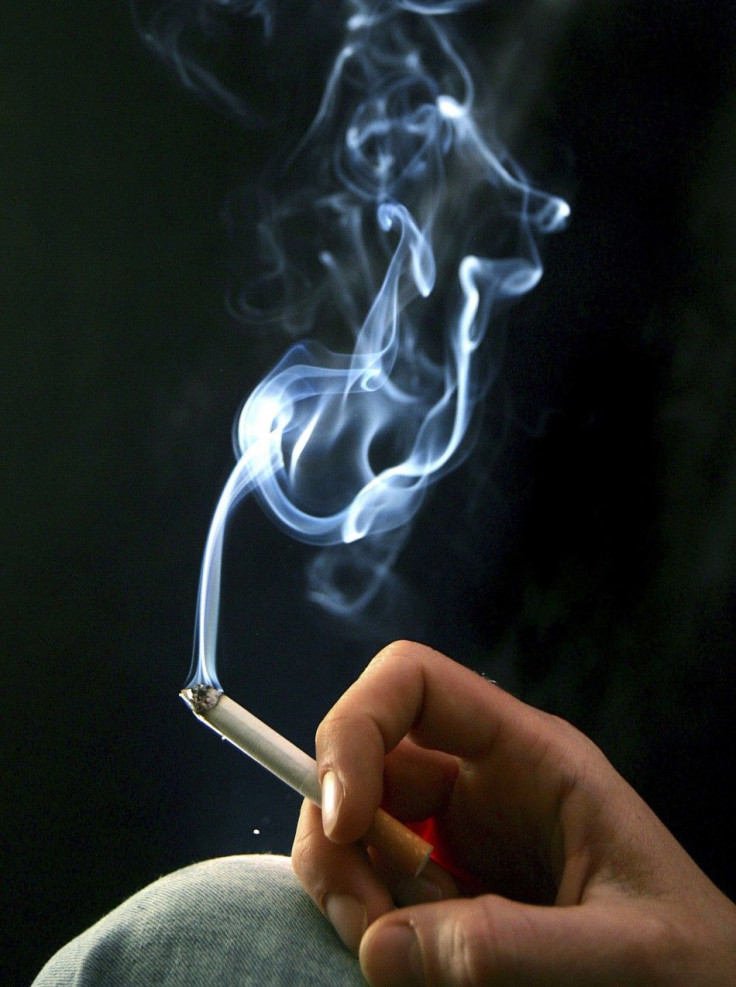No Butts About It: Researchers Want R Rating For All Movies With Smoking

Should Humphrey Bogart's chain-smoking tough guy automatically earn Casablanca an R rating? According to the authors of a new study on tobacco use in the movies and its effects on young viewers, the answer is yes.
The study, which will be published next month in the journal Pediatrics, estimated the impact that an automatic R rating would have on smoking use among adolescents. Enrolling 6,522 American teenagers, the study's authors measured movie-smoking exposure in 532 recent hit movies, which were categorized into three of the ratings brackets used by the Motion Picture Association of America (MPAA). The researchers say they were able to show that adolescent smoking would be reduced by 18 percent if smoking in PG-13 movies were largely eliminated.
Dr. James Sargent, co-director of the Cancer Control Research Program at Norris Cotton Cancer Center and the study's lead author, believes it's time Hollywood took responsibility for its influence over young people's habits. We're just asking the movie industry to take smoking as seriously as they take profanity when applying the R rating, Sargent wrote in the study. The benefit to society in terms of reduced health care costs and higher quality of life is almost incalculable.
The point is a valid one at a time when the MPAA has come under increased criticism for what many see as an outdated and arbitrary rating system. Earlier this year, when the organization slapped the anti-bullying documentary Bully with an R rating for profanity, celebrities such as Ellen DeGeneres and Justin Bieber joined Harvey Weinstein, the film's producer, to pressure the MPAA to change the rating to a PG-13. A compromise was eventually made after the filmmakers edited some instances of the F-word.
Howard Gantman, MPAA's vice president of corporate communications, said the organization takes parents' concerns very seriously, but those concerns must be weighed against a filmmaker's right to artistic freedom. Smoking is a serious health problem and one that our industry should not be encouraging or glamorizing, Gantman said. At the same time, it is important to preserve freedom of expression and speech and storytelling.
But Sargent believes that the numerous health risks associated with smoking should be society's primary concern. Smoking is a killer, he wrote. Its connection to cancer, heart attacks and chronic lung disease is beyond doubt. Kids start to smoke before they're old enough to think about the risks. Hollywood plays a role by making smoking look really good.
However, Jonathan Freedman, a social psychologist and professor emeritus at the University of Toronto, is not convinced. Despite what the authors say, neither this nor earlier studies provide any clear evidence for a causal effect of exposure to cigarette smoking on trying a cigarette, he said.
Freedman, who describes himself as someone who hates smoking as much as anyone, cautioned against jumping to conclusions about the link between movies and teen tobacco use, particularly amid such a wide range of additional variables. Parents, siblings, friends, advertising -- Freedman believes that each of these variables is likely to play a role in whether or not an adolescent will experiment with cigarettes. Freedman also pointed out that the data compiled in the new study is already several years old, while criticizing the authors for publishing a paper that contains so little detail about methodology that it is hard to evaluate.
Mike Stoolmiller, a research associate at the University of Oregon who worked on the study, conceded that the sample group was recruited in 2003 and the final interviews were conducted in 2005. However, he countered the implication that the age of the data is relevant to the results. None of the scientific reviewers raised that issue for this paper, he said. An extremely valuable dataset like this one can provide answers to many important questions and the publication process can span many years.
The MPAA, for its part, has taken to policing itself on the issue of smoking in the movies, although the organization is clearly not blind to pressure from parents groups and health organizations. In 2007, it began voluntarily incorporating smoking as a factor in the ratings of all movies, applying ratings it believes would be applied by most parents.
We're treating smoking as we do all other rating elements by considering it in context, added Gantman. The purpose is to give information -- not to prevent material from being put on the screen.
© Copyright IBTimes 2024. All rights reserved.












